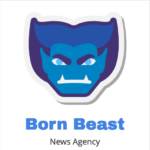Layered on top of other software products, applications, or websites, the digital adoption platform (also known as DAP, DAP platform, or DAP software) helps users become more proficient faster by guiding them through important activities and offering interpretative and evaluative information as they work their way through a product.
Read More: اعتماد
Digital adoption platforms are software systems created to make software learning easier for employees and users by streamlining user and employee experiences and guaranteeing competency across all software platforms, websites, and applications.
These platforms were created to boost return on software investments and guarantee a successful digital transition.
The market for digital transformation is expanding swiftly; between 2022 and 2029, it is expected to reach USD 6.78 trillion at a compound annual growth rate of 20.9%. The necessity for businesses to change their operations in order to remain competitive and the growing use of digital technology across a range of sectors are the main drivers of this expansion.
Platforms for digital adoption are playing a bigger role in facilitating organizational digital transitions. Consequently, the market for digital adoption platforms is expected to increase at a quicker rate than the market for digital transformation as a whole.
By guaranteeing that workers are competent with software tools and can swiftly adjust to new technologies, digital adoption platforms may also assist avoid software paralysis. This can help firms undergo digital transitions more successfully by averting delays and productivity losses brought on by staff members finding it difficult to use new software tools.
What Makes Software for Digital Adoption Platforms Important?
Organizations that use software that is fluid and effective can encourage employee development and productivity.
Making sure that businesses get the most out of their applications and integrated software solutions typically depends on platform adoption. In-app assistance and the user onboarding process, which enable and warrant new recruits to do more in a time-effective manner with more efficient staff training, are among the fastest and most effective ways to accomplish this.
Platforms for digital adoption offer improved, reliable analytics that assist companies in implementing successful internal governance and stakeholder initiatives. These actions are in line with best practices and have been shown to double worker productivity, which eventually leads to better customer-focused experiences.
Your Guide to Digital Adoption Strategy
The most noticeable aspect of the contemporary digital business environment is without a doubt the adoption of digital software and users. An increasing number of intelligent and resilient technologies are available to help companies stay competitive, grow exponentially, and simplify their operations quickly. Adhering to regulatory requirements is a notoriously challenging task.
Because end users did not embrace digital transformation initiatives, 38% of these initiatives failed to achieve their goals in the past year. According to the State of Digital Adoption Report, that percentage rose to over 46% for medium-sized businesses, translating into $12.7 million in lost expenditure.
Nevertheless, the failure rate of firms that acknowledge the value of digital improvements and user acceptance is still greater than they would want to acknowledge. Just 7% of businesses have completely adopted digital transformation plans, and even those that have had some success in the beginning have not yet completely digitalized their operations.
Prioritizing digital adoption at each phase of the user adoption and implementation cycle is the straightforward solution. This comprehensive book will provide you a thorough understanding of digital adoption and an overview of the seven key tactics that may improve your firm’s bottom line, increase productivity, and facilitate business transformation.
Remove Employee Opposition to Change
Having the greatest digital adoption tools and platform in the world is meaningless in the digital age. Digital adoption won’t be simple if staff members don’t care about it or don’t comprehend the nuances involved. Internal resistance to change is one of the most frequent obstacles firms will encounter while adopting digital transformation, according to Gartner. The majority of companies overlook the time and energy required for adequate staff training. A user’s challenges during the different onboarding stages can be minimized with the use of an onboarding checklist.
Businesses are using digital adoption solutions (DAS) to upskill new hires and remove user uncertainty. When users are unaware of all the advantages of a successful digital adoption platform (DAP), they struggle. The most effective strategies for digital adoption include a strong emphasis on project management, learning materials, learning procedures, staff learning and training, and interactive product tours.
Supply Improved In-App Instructional Resources
Before, during, and after the integration of digital adoption tools, businesses that want to get the most out of their staff members and teach them how to use and build new software must offer improved on-screen, in-app advice. According to McKinsey, in order for enterprise companies to fully benefit from digital adoption, business users must make sure that the nuanced interactions between humans and machines are as natural as feasible. This implies that in-app training is crucial when introducing a new learning platform to staff members.
